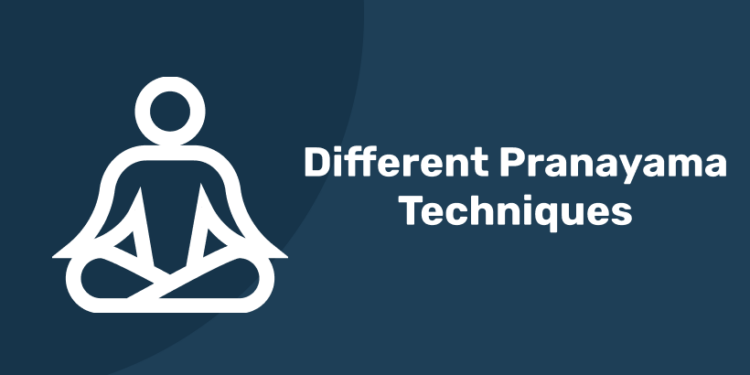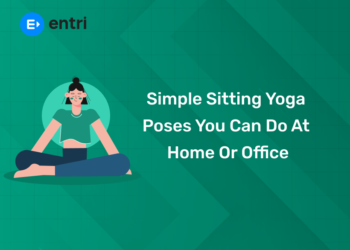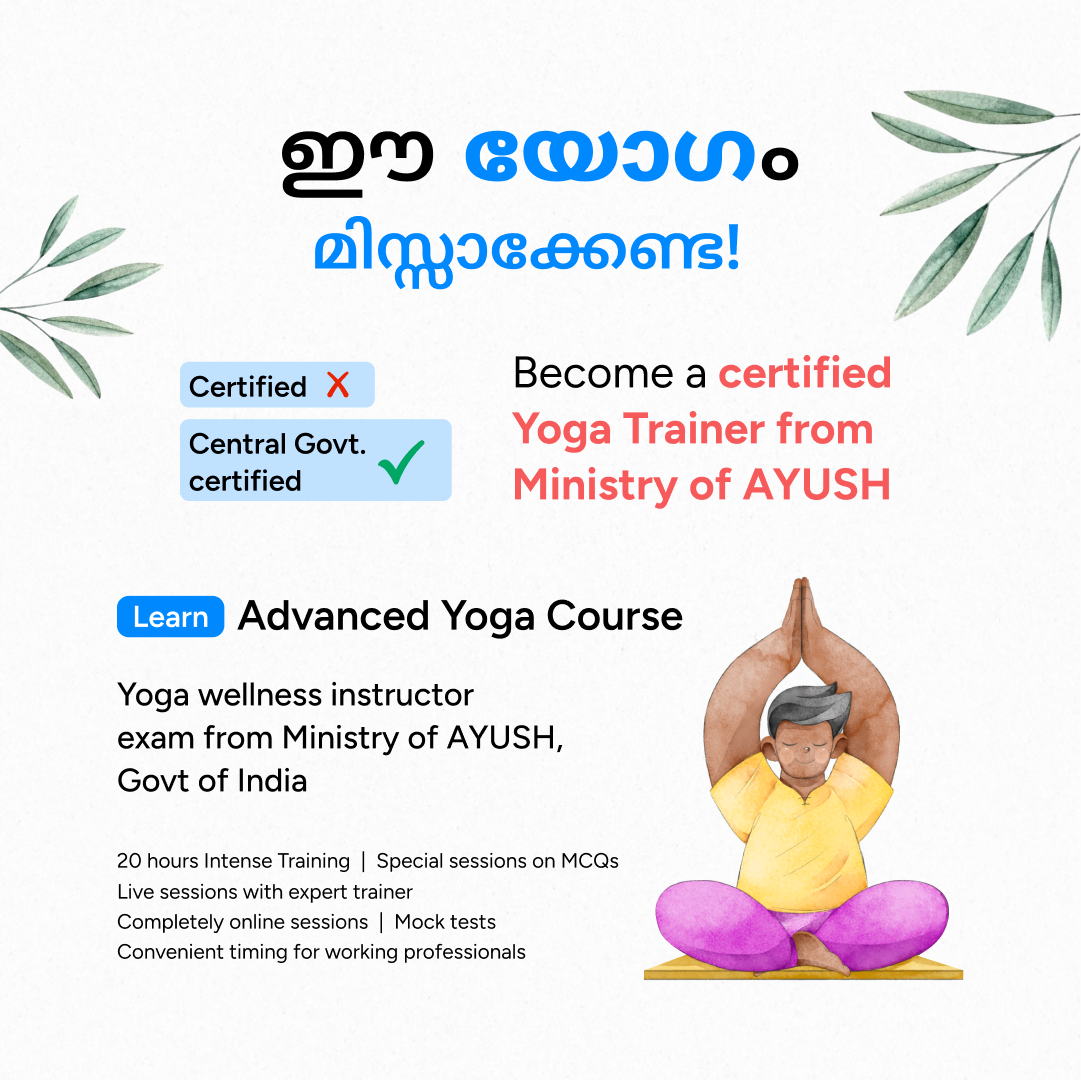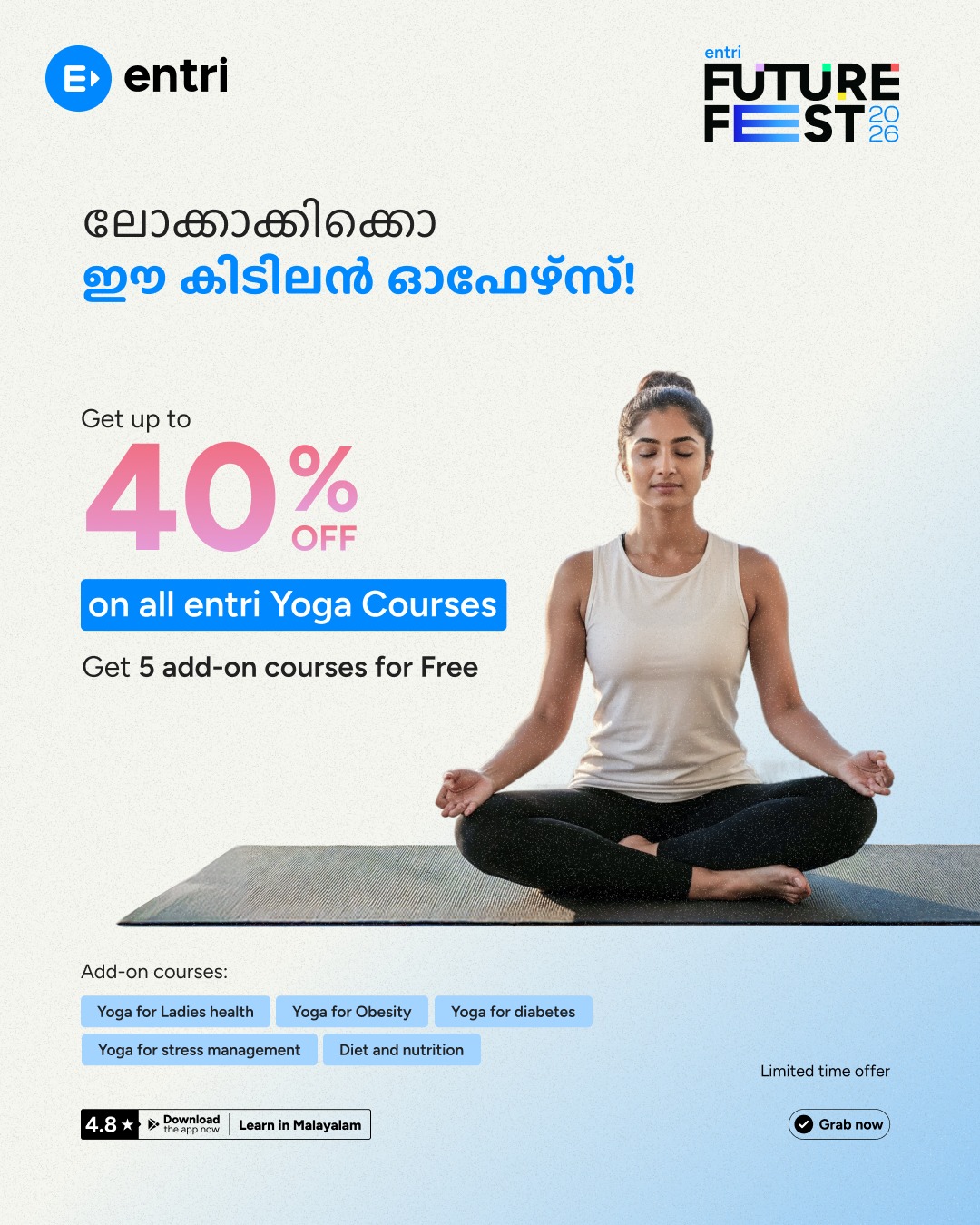Table of Contents
Pranayama essentially means working in the dimension of prana. Prana is the vital energy needed by our physical and subconscious layers, without which the body would perish. It is the prana or life force in us that nourishes the mind and keeps the body alive. Here in this article, we introduce 5 different Pranayama Techniques.
Your Journey to a Fulfilling Yoga Career Starts Here! Get Free Demo Classes Here!
What is Pranayama?
The fourth anga (limb) of yoga is referred to as pranayama and is frequently practiced with pranayama yoga. It is said that by controlling your breath, you can control the power of your mind. The term “Pranayama” is derived from the Sanskrit terms “Prana” and “Ayama”, translating to “breath” and “expansion”. Yogic breathing exercises can help you control your life force, also known as the prana.
Pranayama is a deep breathing exercise that dates back to thousands of years and comes from Indian yogic traditions. It involves regulating your breath in different lengths, frequencies, and durations. The goal is to connect your body and mind through pranayama. Apart from cleansing your body of toxins, it also supplies the body with ample oxygen and is intended to have physiological effects that promote healing. A cycle of pranayama yoga has three stages:
- Puraka (Inhalation)
- Kumbhaka (Retention)
- Rechaka (Exhalation)
Yoga Trainer – Skills, Responsibilities, Job Opportunities, Career Scope
What is Prana?
Despite having a connection to the breath, prana is not the breath. Prana is an energy that flows through thousands of subtle energy channels called nadis and energy centers called chakras. It creates an aura around the body. The quantity and quality of prana and the way it flows through the nadis and chakras determine one’s state of mind.
The movement and energy of prana, the cosmic energy flowing through us and around us, is influenced by our actions, thoughts, and especially the way we breathe.
If the prana level is high and its flow is continuous, smooth, and steady, the mind remains calm, positive, and enthusiastic. However, the lack of knowledge and attention to one’s breath could cause partial blockages in the nadis and chakras. Unfortunately, this leads to a jerky and broken prana flow. As a result, one experiences increased worries, fear, uncertainty, tensions, conflict and other negative qualities. Every problem first generates in the subconscious and then surfaces on the physical level. Sickness shows up in your prana (pranic sheath) much before you get physically sick.
Different Pranayama Techniques
1: Which of these is the primary goal of yoga practice?
1.Bhramari Pranayama
What is Bhramari Pranayama (Humming Bee Breath)
The word “Pranayama” comes from a Sanskrit word. “Extension of breath” is the literal translation. Prana is the vital force that provides energy to our bodies. It establishes a close link between the mind and consciousness.
Bhramari Pranayama gets its name from Bhramari, a black Indian bee. Bhramari Asana can be practised to de-stress yourself primarily as a part of your routine yoga before bed.
Science Behind Bhramari Pranayam
The sound we generate when we exhale while practising this Asana, which resembles the humming sound of a bee in your throat cartilage, creates a calming effect in your brain and body.
Bhramari Pranayama Benefits
Bhramari Pranayama offers numerous advantages, which are as follows:
- Bhramari Pranayama aids in the improvement of focus, memory, and self-awareness.
- Helps with issues related to eyes, nose, and mouth.
- Helpful for people who suffer from paralysis.
- Lowers blood pressure, stress, and exhaustion.
- It is beneficial in cases of sleeplessness.
- It helps in controlling migraine headaches.
- Assists in keeping good heart health by preventing heart blockages.
- It can provide a soothing effect on nerves.
Spiritual Benefits of Bhramari Pranayama (Humming Bee Breath)
Humming has a powerful effect on the body, mind, and spirit. The humming sound produced during Bhramari Pranayama functions as a detoxifier, clearing the mind of all negative thoughts. It awakens and channels higher-level energy centres, which are crucial for spiritual development.
Bhramari Pranayama Benefits for Eyes
- It helps to increase focus and coordination between both eyes.
- Bhramari Pranayama also incorporates simple eye exercises and other body parts, which is also a great benefit.
Bhramari Pranayama Benefits for Ear Problems
Bhramari decreases the observed loudness of tinnitus, its impact on patients’ lives, and the anxiety and depression associated with it.
Effects of Bhramari Pranayama on Brain
Bhramari Asan promotes focus, speech discrimination, and gripping capacity by putting the brain wave into an alpha state. This long-term workout, if done correctly, can revitalise and transform the body, mind, and spirit.
Bhramari Pranayama During Pregnancy
As per a study, pregnant women practising Bhramari yoga for just eight weeks experienced reduced cardiovascular hyper-reactivity to cold stress.
Hypersensitivity to cold stress can be an early sign of preeclampsia. The ability to convert this reaction to hypo-reactivity can be used to prevent pregnancy-induced hypertension.
Bhramari Pranayama Steps
- Sit in a comfortable position either on the floor, on a chair, or on the bed to do Bhramari Breathing.
- Sit cross-legged or kneeled with a support of a cushion or blanket, whatever may be comfortable for you.
- Close your eyes as you relax into your seat.
- Feel the environment around you while stretching your spine and keeping your back straight.
- Block off any external sound by gently pressing your thumb on the cartilage of your ears just below your cheekbones.
- Close your eyes gently with your index and middle fingers.
- Take a big breath in through your nose and expel through your nose as well while keeping your ears shut.
- Make a humming or buzzing sound when you exhale.
- Continue breathing for at least six cycles, or as long as you like.
- Take a few moments to sit in silence and breathe normally after you’ve finished Bhramari breathing.
Side Effects of Bhramari Pranayama
There are no harmful side effects of Bhramari Pranayama, but here are some precautions that one must take care of:
Precautions for Doing Bhramari Pranayama
- Bhramari Pranayama should be done on an empty stomach or within four to five hours of eating.
- Pranayama should be done first thing in the morning, preferably before sunrise.
- Take a break and breathe deeply before moving on to the next round if you get exhausted while doing the Asana. Do not push yourself to do the Pranayama.
- While creating the humming sound, avoid putting pressure on your tragus.
- Instead of putting your fingers inside your ear, place them on the tragus.
- When practising Bhramari, don’t put pressure on your face or eyes.
- When making a humming sound, be sure you don’t go breathless.
- Avoid this breathing exercise if you are pregnant.
2.Bhastrika
When we do any physical exercise our body demands more oxygen, which signals the heart to pump faster, thus raising the heartbeat. But did you know that when you do Bhastrika Pranayama, you pump even more quantity of oxygen even without the body not asking for it. Bhastrika Pranayama is the process of rapid inhalation and exhalation which gives a boost to the body and hence is aptly called the yogic breath of fire. So, the next time you feel like your body needs energy, try Bhastrika Pranayama instead.
Steps to do Bhastrika Pranayama
- Sit in vajrasana or sukhasana (cross-legged position).
- (Pranayama can be more effective in vajrasana as your spine is erect and the diaphragmatic movement is better.)
- Makes a fist and fold your arms, placing them near your shoulders.
- Inhale deeply, raise your hands straight up and open your fists.
- Exhale slightly forcefully, bring your arms down next to your shoulders and close your fists.
- Continue for 20 breaths.
- Relax with palms on your thighs.
- Take a few normal breaths.
- Continue for two more rounds.
Get Certified, Get Confident! Join Our Yoga Teacher Training Course!
Benefits of Bhastrika Pranayama
1. Benefits of Bhastrika praṇayama for managing anxiety
A study revealed that anxiety levels were significantly reduced after practicing Bhastrika praṇnayama regularly. However, you must consult a therapist or psychiatrist if you experience severe anxiety.
2. Benefits of Bhastrika pranayama for reducing blood pressure
Studies show that Bhastrika praṇnayama may help in decreasing high blood pressure by dilation of blood vessels. It is essential to check blood pressure regularly and take proper medication in case of high blood pressure.
3. Benefits of Bhastrika praṇayama for heart health
Bhastrika praṇnayama, if practised regularly, may increase the heart rate. It may activate the autonomic nervous system, which regulates involuntary activities like the heart rate. Any abnormalities related to heart function are serious; therefore, you must immediately consult your doctor if you experience any symptoms of heart disease.
4. Benefits of Bhastrika pranayama to control blood sugar levels
Bhastrika praṇayama may help reduce blood sugar levels. Practising Bhastrika praṇayama may increase the metabolism and uptake of sugar in the peripheral tissues. Hence, it may be suitable for diabetic individuals. However, you must get your sugar levels checked regularly and consult your doctor in case of abnormal blood sugar level.
5. Benefits of Bhastrika pranayama for managing weight
Studies have shown that practising this asana may reduce body weight, body mass index, and waist and hip circumference. Further research is required to confirm this finding. However, if you are overweight, you must consult a dietician to give you a plan to get to a healthy weight.
6. Benefits of Bhastrika pranayama to improve lung function
Regular practice of Bhastrika praṇayama help to boost lung function, especially in older individuals. A study was conducted on 60-70 years old 40 male volunteers. Results suggested significant improvement in respiratory muscle strength, therefore improving lung function. It may also lower the risk of lung infections. However, if you suspect any abnormalities with the lung function, you must immediately consult a doctor.
7. Benefits of Bhastrika pranayama for asthma
In asthma, resistance is created in the airway, which hampers the smooth flow of air in and out. Bhastrika praṇayama improve the lung capacity by opening the small lung airways. Another cause of asthma may be stress. Therefore, practising Bhastrika praṇayama may calm the mind and help relieve stress. However, if you experience severe asthma symptoms, you must consult your doctor to get proper treatment.
8. Benefits of Bhastrika praṇayama to improve static balance
Bhastrika praṇayama help to enhance the static balance. Studies have shown that regular practice may synchronise metabolic and nervous function, mental concentration, and cardiovascular rhythms and reinforce mind stability, therefore achieving overall static stability of the body when there is no activity.
3.Nadi Shodhana
Nadi = subtle energy channel; Shodhan = cleaning, purification; Pranayama = breathing technique.
Nadis are subtle energy channels in the human body that can get blocked due to various reasons. The Nadi Shodhan pranayama is a breathing technique that helps clear these blocked energy channels, thus calming the mind. This technique is also known as Anulom Vilom pranayama.
What blocks the nadis
- Nadis can get blocked on account ofstress
- Toxicity in the physical body also leads to blockage of nadis
- Nadis can get blocked due to physical and mental trauma
- Unhealthy lifestyle
Impact of blocked nadis
Ida, Pingala and Sushumna are three of the most important nadis in the human body.When the Ida nadi is not functioning smoothly or is blocked, one experiences cold, depression, low mental energy and sluggish digestion, blocked left nostril. Whereas when the Pingala nadi is not smoothly functioning or is blocked, one will experience heat, quick temper and irritation, itching body, dry skin and throat, excessive appetite, excessive physical or sexual energy, and blocked right nostril.
3 Reasons to Practice Nadi Shodhan Pranayama
- Nadi Shodhan pranayama helps relax the mind and prepares it to enter a meditative state.
- Practicing it for just a few minutes every day helps keep the mind calm, happy and peaceful.
- It helps in releasing accumulated tension and fatigue.
How to do Nadi Shodhan pranayama
- Sit comfortably with your spine erect and shoulders relaxed. Keep a gentle smile on your face.
- Place your left hand on the left knee, and palms open to the sky or in Chin Mudra (thumb and index finger gently touching at the tips).
- Place the tip of the index finger and middle finger of the right hand in between the eyebrows, the ring finger and little finger on the left nostril, and the thumb on the right nostril. We will use the ring finger and little finger to open or close the left nostril and thumb for the right nostril.
- Press your thumb down on the right nostril and breathe out gently through the left nostril.
- Now breathe in from the left nostril and then press the left nostril gently with the ring finger and little finger. Removing the right thumb from the right nostril, breathe out from the right.
- Breathe in from the right nostril and exhale from the left. You have now completed one round of Nadi Shodhan pranayama. Continue inhaling and exhaling from alternate nostrils.
- Complete 9 such rounds by alternately breathing through both the nostrils. After every exhalation, remember to breathe in from the same nostril from which you exhaled. Keep your eyes closed throughout and continue taking long, deep, smooth breaths without any force or effort.
Cautions to be taken while practicing Nadi Shodhan Pranayama (Alternate Nostril Breathing Technique)
- Do not force the breathing, and keep the flow gentle and natural. Do not breathe from the mouth or make any sound while breathing.
- Do not use the Ujjayi breath.
- Place the fingers very lightly on the forehead and nose. There is no need to apply any pressure.
- In case you feel dull and are yawning after practicing Nadi Shodhan pranayama, check the time you take to inhale and exhale. Your exhalation should be longer than inhalation.
Tips while doing Nadi Shodhan Pranayama
- It is a good idea to do a short meditation after doing Nadi Shodhan pranayama.
- This breathing technique can also be practiced as part of the Padma Sadhana sequence.
7 benefits of Nadi Shodhan Pranayama
- Excellent breathing technique to calm and center the mind.
- Our mind has a tendency to keep regretting or glorifying the past and getting anxious about the future. Nadi Shodhan pranayama helps to bring the mind back to the present moment.
- Works therapeutically for most circulatory and respiratory problems.
- Releases accumulated stress in the mind and body effectively and helps to relax.
- Helps harmonize the left and right hemispheres of the brain, which correlates to the logical and emotional sides of our personality.
- Helps purify and balance the nadis – the subtle energy channels, thereby ensuring a smooth flow of prana (life force) through the body.
- Maintains body temperature.
| Also Read | |
| How to do Hanumanasana (Monkey Pose) and it’s Benefits | Paths of Yoga |
| How To Do Padmasana (Lotus Position) And It’s Benefits | Rocket Yoga |
| Surya Namaskar: Step-by-Step Guide for Sun Salutation |
4. Ujjayi Pranayama
“Ujjayi” (pronounced oo-jai) comes from the Sanskrit prefix “ud” and the root “ji” . The sanskrit word “Ujji” , means “to be victorious”. “Ud” means “bondage” or “binding” as well as “upward” and “expanding.” It suggests a sense of power and upliftment. ‘Jaya’ means victory and success or “to conquer” or “acquire by conquest”. Ujjayi means “one who is victorious”. Ujjayi breath means “breath of victory”.
The reason this is called the victorious breath is that the expansion in the belly and chest during this type of breath perks up one’s confidence in a way that is reminiscent of a victorious warrior. It can also mean “to gain mastery”. At a deeper or more spiritual level, Ujjayi pranayama is about achieving freedom from bondage.
In Yoga, Ujjayi breathing is sometimes also called “the ocean breath”, as the movement of air in the glottis (throat) resembles the sounds of waves of the ocean. A technique that builds heat in the body and relaxes the mind, this breath suits students of all levels—from beginner to advanced. It enhances, empowers and deepens Hatha Yoga practice.
How to generate Ujjayi breath
To create the Ujjayi sound or Ujjayi breath, one can constrict the back of the throat, similar to the constriction made when speaking in a whisper. Therefore, it is an audible breath that is often compared to the sound of the ocean. Although there is a constriction of the throat, the Ujjayi breath flows in and out through the nostrils, with the lips remaining gently closed. The breath should be both long (dirga) and smooth (suksma), allowing the air to reach all the cells in your lungs. As you inhale, your lungs will expand to the side of your waist, to your back, and all the way to your clavicule (collar bone). It will gently massage your internal organs and bring a lot more oxygen and prana into your system. In the beginning, it may seem like a lot of work, but eventually it should become effortless.
Whether breathing normally or in Ujjayi, it is important that the inhalation and exhalation are slow, soft, deep, and long without any tension in the throat muscles. Tension, in any form, might have a contrary impact. It is best not to use any force. Let it come as naturally as possible.
How to practice Ujjayi Pranayama
Ujjayi is one of the important pranayamas described in Hatha Yoga Pradipika, the classical Yoga text. Unlike some other forms of pranayama, which are typically practiced in a seated position, you could use Ujjayi breath with your asana practice as well. It allows more prana, life force, to enter our system and helps to overcome fatigue, stress and negativity. When we use this breath during asana practice, it can make us feel like calm, focused, fierce warriors on our mats. Take every breath with reverence and welcome it as an honored guest.
When practiced as a pranayama, Ujjayi breath is used in three different stages and with three different hand positions to direct the prana (life force energy) to the lower lobes, middle lobes and upper lobes of the lungs, expanding and using both lungs fully.
Yoga Teacher Training – Learn from Experienced Instructors! Get Free Demo Here!
Ujjayi Pranayama during Hatha Yoga practice
This classic breath is very popular among both Hatha Yoga and Vinyasa Yoga Class. If you are a beginner, it is recommended to use normal breaths during asana practice. As you progress, Ujjayi breathing can have a transformative effect on your asana practice and take it to the next level.
- It allows us to use full, deep breaths during the challenges of physical practice. Honor every breath and enjoy the quality that it brings to your practice.
- The steadiness, sound, and depth of the Ujjayi breath helps to link the mind, body, and spirit to the present moment. This unification adds richness and depth to your practice and helps to cultivate presence and awareness.
- This breath raises your yoga practice to a higher level as you learn to breathe with a sense of honor and reverence for your breath and body
- It helps you stay focused and centered as you flow from one posture to the next.
- It improves stability in your asana practice. Becoming absorbed in Ujjayi allows the practitioner to remain in poses for longer periods of time.
- Ujjayi breathing instills endurance and imparts a meditative quality to your flowing practice by bringing in and maintaining a rhythm.
- It diminishes distractions and allows the practitioner to remain self-aware and grounded in the practice.
- It prepares the body for the asana practice by building internal heat. This heat makes stretching safer while cleansing the inner organs of any accumulated toxins.
- This breath releases tight areas of the body.
- It helps you to let go and surrender into a resting posture with its slow and steady rhythm. It also fosters a profound state of calmness and relaxation in the body and mind.
Benefits of Ujjayi Pranayama
Scientific studies show that Ujjayi has a balancing influence on the entire cardiorespiratory and nervous system. It releases feelings of stress, irritation, and frustration, and helps calm the mind and body. With Ujjayi, there are so many benefits, providing immense value to a simple practice. Here are a few benefits you may enjoy as a result of practicing Ujjayi breath:
- Slows the pace of the breath, which is said to improve longevity
- Cleanses and refreshes the nadis (subtle energy channels of the body)
- Infuses the mind-body with fresh prana (vital life force)
- Promotes mental clarity and focus
- Boosts the immune system
- Soothes and rejuvenates the nervous system
- Promotes sound sleep, controls snoring
- Helps in thyroid related problems, helps control high blood pressure and heart related discomforts
- Improves voice quality of singers
Ujjayi breath for spiritual growth
Ujjayi breath encourages the movement of energy spontaneously and naturally from the practitioner’s root center to the crown. The Ujjayi breath is a full body energetic experience that passes through the sushumna nadi, or the central channel of energy that runs through the spine.
The heat generated through the Ujjayi breathing clears and unblocks the stagnated Sushumna nadi, awakening it so that prana begins to flow smoothly.
Ujjayi breathing is also an effective tool of pratyahara (sense withdrawal). The whispering sound becomes an auditory cue, which anchors our attention and thus, makes breath the heart of our practice. As we focus on the sound of our breath (nadanusandhana), our practice easily turns into a dharana, and that can progress into effortless meditation.
Ujjayi breath for athletes
Ujjayi is also useful when you’re doing aerobic exercise such as running or cycling. In fact, some Olympic athletes have introduced Ujjayi into their training routines to improve their respiratory efficiency, and to relieve their pre-race anxiety. Experiment with this breath technique when you’re working out and see how it helps you.
Ujjayi breath to manage your difficult emotions
When you’re agitated, jittery, stressed or nervous, the slow and rhythmic nature of the Ujjayi breath is incredibly helpful to calm nerves. Try shifting into Ujjayi breath whenever you find yourself becoming aggravated or stressed. Breathe in to a count of 4, hold your breath to a count of 4, and breathe out to a count of 4. Repeat this 10 times. You will notice a soothing and relaxing effect promptly.
The science of Ujjayi breath
The ancient yogis and sages were very scientific in their approach to health and wellness. They realized the intimate connection between the breath and the mind thousands of years ago, tapping into the hidden secrets of yoga before the modern age made inroads into scientific discoveries and inventions.
Ujjayi breathing produces internal heat. The friction of the air passing through the throat and lungs generates internal body heat. It is similar to a massage for the internal organs, as the core becomes warm from the inside.
Ujjayi sometimes is also referred to as the psychic breath, as the mechanism of breathing has subtle effects on the brain processes.
Due to the partial constriction of the throat, the lobes of the lungs are required to be expanded to the maximum extent for completing the inhalation, and the chest and abdomen are required to be contracted to the maximum extent for completing the exhalation. Hence, the unused capacity of the lungs is brought to use, resulting in higher oxygen transfer.
The extended movement of the lungs increases the movement of blood, fluids, and nervous energy through the body in a way they would not normally be, unless we were running. When we exercise, the muscles contract, but the same effect is achieved in Ujjayi, keeping the muscles of the body in a relaxed state. This is very beneficial.
The smaller opening due to constriction lets less air through, which makes the breath last longer. Breathing slowly induces calm due to its connection with the parasympathetic nervous system. The vibrations in the larynx stimulate sensory receptors that signal the vagus nerve to induce a calming effect.
The contraction of the throat caused by Ujjayi exerts a gentle pressure on the carotid sinuses in the neck, which regulate blood pressure in the arteries, leading to reduced tension and a slower thought process.
Discover the Art of Teaching Yoga – Join Our Teacher Training Program!
5.Kapalbhathi Pranayama
Kapal = forehead; bhati = shining;
Kapal Bhati assumes significance in these times of pandemic. Here is a quick guide to understanding how the breath is important in revitalizing your immune system, and how KapalBhati helps regularize the breath, making it easier and smoother.
These trying times of the pandemic call for a stronger immune system and a clear mind to act quickly when needed. Our breath is one of the best remedies we have, to cope with anxiety or panic. It is our breath that has amazing recuperative powers. The breath is intimately connected with our mental and emotional state. Our breath influences our thoughts and emotions and vice versa. The breath-emotion loop acts very quickly – just a few minutes of deep breathing can calm your mind down.
By conscious breathing, we can activate our body’s innate response to relax. By gradually regularizing our breath, we can help in decreasing the stress hormone, and activating the lymphatic system which plays a critical role in our immune function.
Kapalbhati Benefits
Here are the benefits of Kapalbhati daily
- Increases the metabolic rate and aids in weight loss.
- Enhances the capacity of the lungs and makes them stronger.
- Clears the nadis (subtle energy channels).
- Stimulates the abdominal organs and thus is extremely useful to those with diabetes.
- Improves blood circulation and adds radiance to the face.
- Improves digestive tract functioning, absorption, and assimilation of nutrients.
- Results in a taut and trimmed down belly.
- Energizes the nervous system and rejuvenates brain cells.
- Calms and uplifts the mind.
How to do Kapal Bhati: Steps
- Sit comfortably with your spine erect. Place your hands on the knees with palms open to the sky.
- Take a deep breath in.
- As you exhale, pull your navel back towards the spine. Do as much as you comfortably can. You may keep your right hand on the stomach to feel the abdominal muscles contract.
- As you relax the navel and abdomen, the breath flows into your lungs automatically.
- Take 20 such breaths to complete one round of Kapal Bhati.
- After completing the round, relax with your eyes closed and observe the sensations in your body.
- Do two more rounds of Kapal Bhati.
Kapal Bhati tips to make your practice effective
- The exhalation in Kapal Bhati is active and forceful. So, just throw out your breath.
- Don’t worry about the inhalation. The moment you relax your abdominal muscles, inhalation will happen naturally.
- Keep your awareness on breathing out.
- Practice this technique at home on an empty stomach.
Become a Certified Yoga Instructor
Yoga Teacher Training Course by Entri App: Master authentic yoga techniques, earn certification, and build a successful career as a professional yoga instructor.
Join Now!Benefits of Pranayama
We’ve learnt what pranayama is and what are the types of pranayama. Let’s focus on the benefits of pranayama now. The regular practice of deep breathing exercises can completely change one’s quality of life.
The advantages of yogic breathing exercises for health have been examined in numerous medical and scientific publications. Even though each type of pranayama technique has its own distinct features and results, it’s vital to remember the general benefits of pranayama. If you intend to practice pranayama for any of these advantages, thoroughly investigate the technique first in order to apply it correctly and be conscious of any precautions or negative effects.
General benefits of pranayama:
- Increases and enhances the quantity and quality of prana, thereby increasing our energy levels
- Clears blocked nadis and chakras, thereby expanding our aura and heightening the spirit
- Makes one energetic, enthusiastic, calmer and positive. Such a state of mind helps us in making better decisions, having mental strength when dealing with adversities and feel happier
- Brings harmony between the body, mind, and spirit, making one physically, mentally and spiritually strong
- It brings clarity to mind, and good health to the body
Become a Certified Yoga Instructor
Yoga Teacher Training Course by Entri App: Master authentic yoga techniques, earn certification, and build a successful career as a professional yoga instructor.
Join Now!Frequently Asked Questions
What is the benefit of Bhastrika pranayama?
Bhastrika benefits are: Bhastrika produces heat at physical and subtle level. Bhastrika increases gastric fire. So digestion improves. Removes blockages from the nose and chest. So good for sinus, bronchitis, and other respiratory patients. Bhastrika balances doshas.
When should you not do pranayama yoga?
Though pranayama yoga has great benefits, one should be careful not to practice it vigorously since it should be done gently.
- Avoid doing pranayama after meals since any energy produced by the deep breathing exercise will be consumed in digesting your food.
- Avoid Kapalbhati pranayama during menstruation as it requires vigorous abdominal squeezes.
- Shitkari or Sitali pranayama is not suitable for people with low blood pressure and during winter since it would further reduce your body temperature.
- Suryabhedhan pranayama can be avoided in case of high blood pressure or heart disease.
What is the benefit of Nadi Shodhan pranayama?
Benefits of Nadi Shodhan pranayama: Opens the blockages in the nadi and smoothens the flow of energy throughout the body. Improves blood supply to brain, thus calms, centers and brings the mind to the present moment. Good for the most respiratory and ciculatory problems. Balances the left and right brain hemispheres related to the logical and emotional aspects of an individual.
Who should avoid doing Kapal Bhati?
Avoid practicing this breathing technique if you have an artificial pacemaker or stent, epilepsy, hernia, backache due to slip disc, or have recently undergone abdominal surgery. Women should not practice the Skull Shining Breathing technique during and shortly after pregnancy as well as during menstruation as it involves vigorous abdominal squeezes. People with hypertension and heart problems should practice this breathing technique only under a yoga expert’s guidance.

























